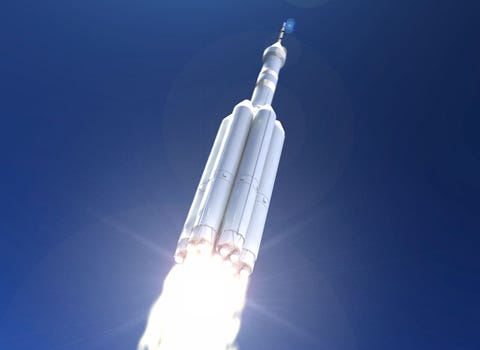Everything You Need To Know About Russia’s (Possibly Fictional) Super Heavy Rocket

According to Roscosmos's definition, a super-heavy rocket is capable of delivering at least 35 tons of cargo into Earth’s orbit. But most other companies and agencies tend to describe a “super-heavy rocket” as a vessel capable of carrying at least 50 tons or more. Past similar rockets, like the Apollo-era Saturn 5, could carry 140 tons into low-Earth orbit, which helped NASA pull off its gutsy moonshots in the late 1960s and early 1970s.
Five decades later, those super rockets are back in fashion as the only realistic means of launching ambitious human exploration projects (unless space elevators or photon engines make some huge engineering leaps).
In the U.S., NASA and private companies like SpaceX and Blue Origin, are already developing or launching progressively bigger rockets, crossing Russia's 35-ton, super-heavy threshold. China is also inching toward a vehicle, called the Long March 9, that will be able to transport closer to 100 tons.
With so many players aggressively pursuing their super-heavy rocket ambitions, Moscow’s grown increasingly concerned that its space program was lagging. After having ceded numerous space frontiers to the U.S., Europe, China, and India in the past two decades, the Kremlin needed something to show it was still a big dog in this new global space race.
No comments:
Post a Comment